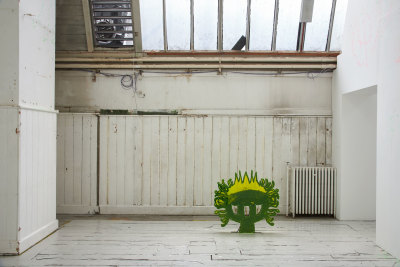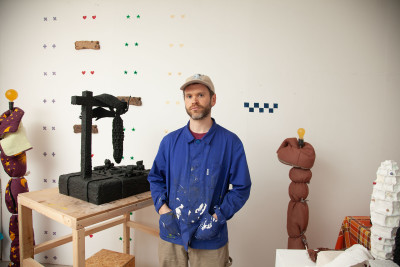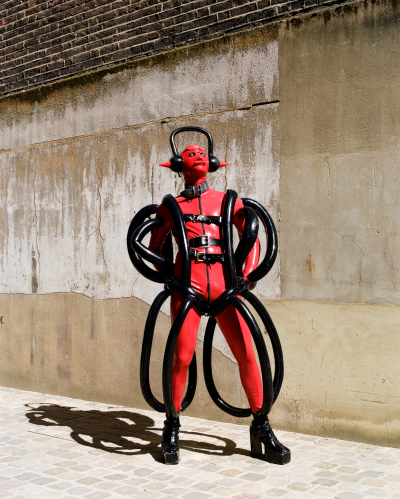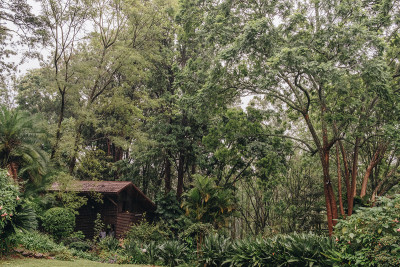Art under threat: the growing crisis in higher education
Art under threat: the growing crisis in higher education
By Sam Phillips
Published 20 March 2019
Britain’s reputation as a creative country is at risk, as threats mount to the education pathway that leads potential artists from school to university to professional life. Sam Phillips reports on the political challenges facing higher education.
-
From the Spring 2019 issue of RA Magazine, issued quarterly to Friends of the RA. This issue is an arts education special, to mark the 250th anniversary of the RA Schools.
-
“Creative arts courses are ‘not economically worthwhile’”.
“One in four students is on a ‘Mickey Mouse’ course that won’t lead to well-paid job… leaving taxpayers to foot the cost of their unpaid loans”.
“Bar students from ‘poor value’ university courses that offer little economic benefit”.These headlines, published on 7 January 2019, made painful reading for anyone attending or working in art schools. The newspapers were responding to a report released by right-wing think-tank Onward that argued for “a reduction in low-value university degrees that deliver weak earnings for graduates and poor value for money for taxpayers”. The report had used Department for Education estimates to claim that creative arts and design courses were the worst value. These sat at the bottom of a table of median graduate earnings, with £20,200 the average annual income after five years (Medicine and Dentistry topped the table with £47,300). Because graduates of any subject are not required to pay back their student loans until they earn £25,000 per year, and because debts are written off after 30 years, the report asserted that more debt would be forgiven for creative graduates than for anyone else. Other estimates showed creative graduates living their lives with a low or negative “graduate premium”, the term used for the extra earnings a graduate can expect in comparison to a non-graduate.
The report’s recommendation that “low-value” courses should be reduced has been timed to influence the Government’s independent review of higher education funding, led by former City financier Philip Augar and due to report in spring. Education Secretary Damian Hinds explained the review’s guiding principle: “with a system where almost all institutions are charging the same price for courses – when some clearly cost more than others and some have higher returns to the student than others – it is right that we ask questions about choice and value for money.” Leaks last year suggested that the Augar Review would recommend that tuition fees for arts and humanities courses could be capped at £6,500, down from the current annual £9,250. Fees for STEM subjects (science, technology, engineering and maths) would rise to £13,500.
Art schools around the country shuddered: it is unlikely that the shortfall in funding would be made up by the state, with the Government intent on reducing expenditure. That could mean major reductions in what art schools have to spend per pupil, directly affecting the extent and quality of the country’s arts and design courses.
-

Illustration by Michael Kirkham
-
Contrary to some opinion, these courses are not cheap to teach. “Walk into any art school and you see the amount of resources and technology needed, from studio space to 3-D printing facilities,” says Sandra Booth, Director of Policy and External Relations at the Council for Higher Education in Art & Design (CHEAD). Indeed, the Office for Students classes them as intermediate-cost subjects, and places them in a higher “price group” than subjects such as maths, business and social science, albeit subsidising them only to an extra £250 per pupil on top of the £9,250 tuition fee. “Our average cost of delivery for undergraduates is about £11,500,” says Nigel Carrington, who as Vice-Chancellor of University of the Arts, London (UAL), oversees seven colleges that include Central St Martins and Chelsea College of Arts. “We are already cross-subsidising our home students with fees from international students.”
“The challenge for art and design is that we’re equipment- and space-hungry – space is an expensive resource,” explains Anita Taylor, Executive Dean at Bath School of Art & Design. “But people don’t understand that there is very little funding from the Government. We are seen as public institutions, but with the tuition fees system, we have basically become private institutions. If the funding is cut, there will be an impoverished learning experience, and many universities will no longer teach some subjects. The only ways we will survive as art schools will be to become small and bespoke, or very big – maybe delivering at a distance, because of the challenge for space.”
“I think a cut to fees is quite likely,” says Booth. “Whether that will encourage more students, because the courses will be seen as more affordable, or whether they will be perceived as lower quality and less attractive – these are completely untested potential policy consequences. But anything that’s going to bring down the headline figure of £9,250 is politically important.” High tuition fees were a key issue in the 2017 election, with the Labour Party promising to abolish fees altogether. The stakes rose in December, when a technical accounting decision by the Office for National Statistics added the £12.3 billion of student loans to the Government’s national deficit. “This big pot of money on the public purse adds to questions about what university degrees deliver,” continues Booth. “But that means looking at the broader economic, social, cultural and transformative contribution that an arts education makes – a far greater contribution than can be measured as a graduate’s salary.”
-
Because our art students learn through experimentation and failure they develop a mental resilience, an ability to deal with adversity and uncertainty, that is precisely what society needs.
Nigel Carrington, Vice-Chancellor of UAL
-
“Britain is a creative leader because its schools generate people with an amazing ability to innovate and to stimulate,” says Carrington. “There is an incredible amount of confusion in the minds of some newspaper editors and politicians as to what studying a creative subject really means. The narrative about the instrumental value of a degree in terms of earnings defines outcomes in a very simplistic way.” Artist and activist Bob and Roberta Smith RA explains that “the value of any kind of education is not directly financial – although it can be. The value of education is to create an innovative, informed, democratic, robust and varied society.”
According to the Creative Industries Federation, 35% of creative workers are self-employed. “In many respects, these graduates are leading the way to the future of work, making a living that is less traditional but much more creative, mobile and fluid,” says Booth. “In the years after graduation, they might be working as freelance artists or designers on a project-by-project basis. They may be working part-time in cultural organisations and businesses, in order to fund their arts practice, or starting up creative enterprises from scratch, or doing all of the above at once.”
Recent analysis by LinkedIn revealed that the most in-demand skill for employers posting on their site in 2019 has been creativity. Creativity and the Future of Work, a report by the innovation charity Nesta, states this demand will increase markedly over the next decade; while many tasks will be taken over by artificial intelligence, creative roles will thrive. “A lot of other jobs for which we’re training people in universities – which have generated reasonably good incomes over the last 50 years – will no longer exist in the same numbers,” says Carrington. “Our students develop a level of critical thinking, creative thought and innovative imaginings that, if you think about the way jobs are changing over the coming years, is exactly what society will need.” He points out that UAL’s newest college is a Creative Computing Institute, which “looks at the interface between artificial intelligence and the creative process”.
“We build creative thinkers and creative do-ers,” says Sonia Boyce RA, a professor at UAL. “Unexpected solutions are the gold of art schools – you don’t just follow a formula, you are encouraged to think beyond the limits of any one context, to think beyond limits. You’re not looking for consensus, you’re looking for the edges of things, the question marks about things. As well something that is pleasurable and gives pleasure, that is a very transferable skill.” Creativity and the Future of Work argues that, when combined with social and technical skills, creativity will have huge agency in the future economy, for many emerging settings, disciplines and industries in addition to art and design.
This interdisciplinary spirit is incubated on courses across the country. “People think art education is a deep focus on the individual, which it is, but it also supports great collaboration,” says Juan Cruz, Dean of the School of Arts and Humanities at the Royal College of Art (RCA). “Students want to be engaged in science, they want to harness the potential of robotics, they want to think about new materials and work with people from other disciplines.” This was true of Whiskey Chow, a Chinese-born performance artist who graduated from the college in 2017 and is now Co-President of its Student Union. “I collaborated with a product designer at college, as well as a jewellery designer – her work fits to the human body and I was using my body as a material.” She recalls that the performance art students would often receive proposals from other departments, including the college’s fashion designers and architects, exploring ways to collaborate.
One word that comes up often is resilience. “Because our art students learn through experimentation and failure they develop a mental resilience, an ability to deal with adversity and uncertainty, that is precisely what society needs,” says UAL’s Nigel Carrington. “Other countries can see that’s such a strength. One of South Korea’s political ambitions is to develop a much more vibrant start-up community, but they have a very high-pressure school system that doesn’t train their students to have the capacity to fail and pick themselves up. So they’re investing vast amounts of money in their creative universities precisely to generate that creative impulse that they need to complement technical excellence.”
“Studying art is a process in which you don’t know the outcome,” explains Eliza Bonham Carter, Curator and Head of the RA Schools. “It is the opposite of ‘teaching to the test’, which doesn’t build resilience in people – instead it builds reliance that if you conform, you will succeed, and that is problematic. I wonder whether the lack of agency it gives children is part of the cause of the levels of anxiety and depression we see among young people. I wonder if they don’t feel in control because they’ve never been given the opportunity to find their own way through a question.”
“Art is the only subject I know that when students walk in the door, they are the subject,” says Brian Catling RA, Emeritus Professor at Ruskin School of Art, Oxford. “We ask students about what their dreams are, what their imagination is and what they’d like to be, and then we, the tutorial staff, attach a series of programmes, ideas and mechanisms to help them find its articulation. It’s to help them find their own language, not to give them one, not to force one on them, not to make them jump through the hoops of other people’s ideas. Sometimes art students are not great academic achievers at school, but they can’t help thinking, can’t help making things – they have something to say. Art school offers them belief.”
-

Illustration by Michael Kirkham
-
Bonham Carter agrees. “Art school is filled with very, very clever people who have not succeeded academically. It is a place where people find validation. I don’t know what’s going to happen to those people otherwise.” Art education has been a driver of social mobility from which the whole country has benefited. “Would we know about an artist like David Hockney, coming from the background he did, had he not gone to art school in Bradford and then the Royal College of Art?” asks Cruz.
According to newspaper reports, the Augar Review will recommend that pupils who do not achieve at least three Ds at A-level will not qualify for university funding. Such a move will cut off the pipeline of Britain’s artistic talent – a catastrophe for our culture as much as for those individuals. Arts foundation courses in both colleges and universities, for decades a bridge from school to undergraduate study, have already been closing across the country; as further education courses, they receive less funding than higher education courses, and their decline mirrors a funding cut of 8 per cent to further education as a whole since 2010–11. Serious cuts to art teachers and teaching hours in primary and secondary schools are resulting in fewer young people taking art at GSCE and A-level (page 58).
‘You can discuss higher education policy,’ says Kieran Reed, Director at London’s Slade School of Fine Art, ‘but first you need an individual in school, in the form of an art teacher, who can act as a mentor and understand a student’s desire to make art. You need practising artists in every school, who both teach and have the time for their own research, to bring best practice and bring ideas. If teacher cuts continue, we’re going to have a lost generation.’
Talk to any professional artist and it is highly likely that an art teacher at school played a pivotal role in their career. Sonia Boyce remembers her teacher Dorothy Franklin. ‘I was constantly drawing, on every surface basically. It was an internal way of talking to myself. Mrs Franklin recognised it and took me under her wing at the age of 15, sending me to art school.’ For one day a week, Boyce went to life drawing classes at a local art school; that led to art O-level, then A-level, foundation course, higher education and the achievements and influence she has had as a successful artist and educator. ‘Without good art teaching at school, we won’t have the quality of students coming through in higher education,’ continues Reed. ‘You can see the results of the cuts already: the portfolios we’re seeing are becoming quite standardised, not so inventive.’
British universities have been a draw for aspiring artists worldwide. UAL and the RCA, both mainstays in the top 10 lists of the best places to study, have a large proportion of students from abroad, especially from Europe. ‘It really enriches the environment, introducing people to different study methods, approaches to research and mythologies of practice,’ explains Cruz. But any situation after Brexit that hampers freedom of movement for students will change art schools’ character as highly productive multinational melting pots. ‘EU students will have to be charged as international students, which means their fees will rocket up. Our best estimate is that we’ll lose between 50 and 60 per cent of them.’ For the RA Schools, the situation is stark. As an independent institution, the Schools does not have ‘approved status’ with the Office for Students. Without similar conditions of freedom of movement between Britain and Europe at present, it is unlikely that a European artist could receive a student visa to study at somewhere independent such as the RA Schools. ‘Essentially we would become a British school of art,’ says Bonham Carter. ‘We may have to weigh up the value we place on our independence with the value we place on our diversity. I think both are incredibly important.’
‘There is a disconnect between the disinvestment, possibly by accident, in art education, and all the evidence for its importance,’ argues Anita Taylor. How has such a disconnect happened and how can it be countered? ‘The trouble is that the outcomes of art education are complicated and policy doesn’t manage the complexity,’ says Vicky Gunn from Glasgow School of Art. She is particularly concerned by the fact that the results of the Teaching Excellence Framework, which measures the quality of every university course, can cross-reference graduate earnings from each course. Her recent work focuses on describing with more clarity the processes and impacts of studying art, so that the sector can argue for alternative forms of value.
‘Art students can have a certain antagonistic relationship to society,’ suggests Cruz, ‘and art school is a very important place to be able to harness that energy, as in many instances it can be something productive.’ The art education sector, however, cannot risk antagonising the funding system in which it finds itself. ‘Art schools and faculties used to be able to survive on a philosophy that they were different to other subjects, and used to do special pleading: that’s not a very good mantra anymore,’ says Booth. ‘They need to be more corporate and work with the new rules and metrics, becoming experts within them.’ The Research Excellence Framework assesses the quality of research in British higher education institutions, influencing potential funding, and Juan Cruz is advising on how its criteria for art and design are honed. ‘It’s an opportunity for art and design to make the case for the ongoing support of the research it has undertaken, and to help government understand how and why we’re able to say that our work is indeed research that leads to extraordinary insight and discovery.’
-
Art students can have a certain antagonistic relationship to society, and art school is a very important place to be able to harness that energy, as in many instances it can be something productive.
Juan Cruz, Dean of the School of Arts and Humanities at the Royal College of Art (RCA)
-
One area where money flows more freely is in connection to industry. The Creative Industries Clusters Programme has invested £80m in research and development partnerships between regional universities and a network of major creative businesses nearby; it is accompanied by a Creative Industries Policy and Evidence Centre. The emphasis is on creating impact that can be clearly described and demonstrated, and it appears to privilege applied art and design. “Universities are central to their region through programmes and partnerships, working with local enterprises, local authorities, cultural organisations – all to the benefit of students,” says Booth. “The future is less about operating in an enclosed campus-based situation.”
“It used to be about ‘output’, now it’s about ‘impact’,” says Catling. “It’s a series of hoops – ‘now jump through that one’, and then ‘here’s another one that you’ve never seen before’. Constant change is essential in art schools, but it occurs naturally. Politicians don’t understand art education because they’ve never been to art school – and they don’t have the imagination. Art schools are not predictable, but ‘predictable’ is exactly what governments want. They should understand that you need people who have been professionally trained who want to put their life-force into visual intelligence, and that’s an expert thing, the same as nuclear physics or chemistry or anything else, and you need a special place to grow and test it.”
“We sometimes don’t see art as having an application in the world,” says Taylor. “But art is not a luxury, it’s not an add-on, it’s intrinsic to humans – it’s a human right. It is a primary means of communication and expression, equally as important as writing and speaking. Art is an opportunity for people to have a tangential thought without the polemic of reading or being spoken to – a different wavelength, a different bandwidth, a space which is about connecting to our senses, our ethics, our emotions, to things that we do have that we spend a lot of time denying.”
She sees our immersion in a visual world as the reason we may, as a society, take visual training for granted. "We’re perpetually bombarded with images that are full of meaning, and visual language is all part of our understanding, our haptic awareness, our dexterity, expression, mindfulness, memory – it’s in every bit our lives. But it’s so intrinsic that we’ve perhaps forgotten how to identify it. It’s hard for us to describe its values, but they are deep and they are felt and they are intrinsic to our understanding of who we are and our position in the world.“
-
Sam Phillips is Editor of RA Magazine.





